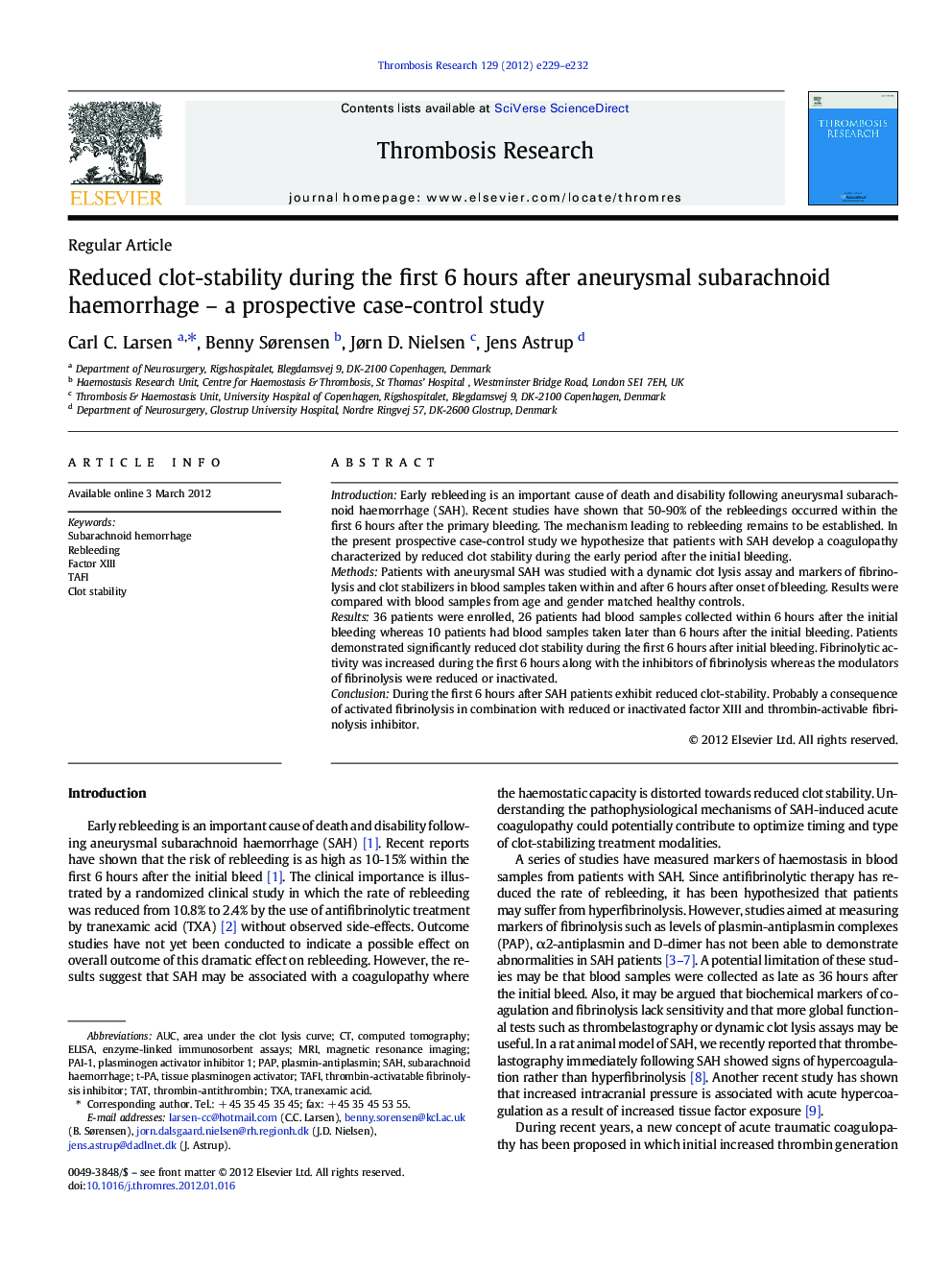| Article ID | Journal | Published Year | Pages | File Type |
|---|---|---|---|---|
| 6003375 | Thrombosis Research | 2012 | 4 Pages |
IntroductionEarly rebleeding is an important cause of death and disability following aneurysmal subarachnoid haemorrhage (SAH). Recent studies have shown that 50-90% of the rebleedings occurred within the first 6Â hours after the primary bleeding. The mechanism leading to rebleeding remains to be established. In the present prospective case-control study we hypothesize that patients with SAH develop a coagulopathy characterized by reduced clot stability during the early period after the initial bleeding.MethodsPatients with aneurysmal SAH was studied with a dynamic clot lysis assay and markers of fibrinolysis and clot stabilizers in blood samples taken within and after 6Â hours after onset of bleeding. Results were compared with blood samples from age and gender matched healthy controls.Results36 patients were enrolled, 26 patients had blood samples collected within 6Â hours after the initial bleeding whereas 10 patients had blood samples taken later than 6Â hours after the initial bleeding. Patients demonstrated significantly reduced clot stability during the first 6Â hours after initial bleeding. Fibrinolytic activity was increased during the first 6Â hours along with the inhibitors of fibrinolysis whereas the modulators of fibrinolysis were reduced or inactivated.ConclusionDuring the first 6Â hours after SAH patients exhibit reduced clot-stability. Probably a consequence of activated fibrinolysis in combination with reduced or inactivated factor XIII and thrombin-activable fibrinolysis inhibitor.
